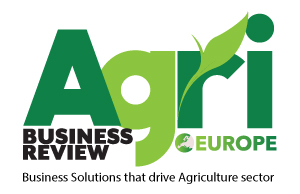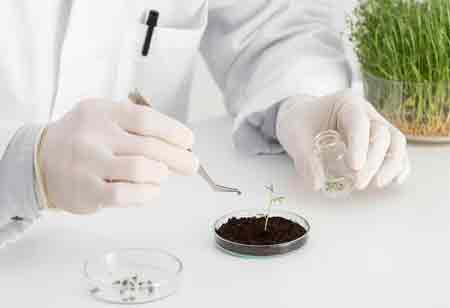Thank you for Subscribing to Agri Business Review Weekly Brief
Mechanization and Soil Stewardship in Latin America's Sugarcane Fields
Latin America's sugarcane harvesting is transitioning from manual to mechanized methods, enhancing efficiency while promoting soil health through the integration of innovative practices and technology.

By
Agri Business Review | Thursday, September 25, 2025
Stay ahead of the industry with exclusive feature stories on the top companies, expert insights and the latest news delivered straight to your inbox. Subscribe today.
A significant transformation is occurring across the extensive sugarcane regions of Latin America. The traditional manual harvesting method, symbolized by the machete's swing, is progressively being replaced by the engineered accuracy of contemporary harvesting machinery. This transition to mechanization transcends a mere alteration of implements; it signifies a foundational advancement in agricultural methodology, one that increasingly endeavors to reconcile the unyielding pursuit of efficiency with the vital necessity of conserving the soil, which constitutes the bedrock of the industry's longevity. This emerging fusion is shaping the forthcoming era of sugarcane cultivation, converting fields into intricate ecosystems that integrate technology and agronomic expertise.
The Rise of Advanced Harvesting Technologies
The move toward mechanization has been driven by a confluence of factors that demand greater productivity and operational streamlining. In response, a new generation of sugarcane harvesters has emerged, representing the pinnacle of agricultural engineering. These powerful machines are designed for maximum throughput, capable of cutting, chopping, and cleaning cane at a pace far exceeding manual capabilities. Equipped with advanced base cutters, they ensure a low, clean cut at the stalk's base, which is vital for the health and regrowth of the ratoon crop. Integrated chopper systems cut the cane into uniform billets. At the same time, powerful extractors work to separate leafy material from the stalk, ensuring a cleaner, higher-quality raw material is delivered to the mill.
This pursuit of efficiency extends beyond the harvester itself. The entire logistical chain is being optimized through digital technology. GPS guidance systems steer machinery with sub-inch accuracy, minimizing overlap and optimizing field coverage. Telematics and fleet management software provide real-time data on machine performance, fuel consumption, and operational status, enabling data-driven decisions that enhance productivity and minimize downtime. This technological integration transforms the harvest from a series of disjointed actions into a highly coordinated, continuous flow of biomass from the field to the factory.
Balancing Mechanization with Soil Health
Yet, this revolution in above-ground efficiency is increasingly matched by a growing understanding of its below-ground consequences. The industry recognizes that long-term productivity is intrinsically linked to the vitality of the soil. The sheer weight and traffic of heavy machinery are significant physical forces that must be managed to maintain healthy soil structure. An unmanaged approach can lead to soil compaction, reducing porosity and impeding water infiltration, which restricts the root growth essential for nutrient and water uptake by the cane.
In this context, the practice of "green harvesting"—mechanically harvesting cane without the precursor step of burning the fields—has become a cornerstone of sustainable mechanization. This approach yields a significant secondary benefit: a thick layer of crop residue, or a "trash blanket," is left on the soil surface. This blanket is a powerful tool for soil stewardship. It shields the soil from the erosive impact of rain and wind, suppresses weed growth, and, crucially, conserves moisture by reducing evaporation. As this organic matter decomposes, it enriches the soil with vital nutrients and carbon, fostering a more robust and resilient soil ecosystem teeming with beneficial microbial life.
The management of this residue and the traffic of machinery are being integrated into sophisticated farming systems designed to balance the physical pressures of mechanization with the biological needs of the soil. These systems represent a proactive approach to soil health, viewing it not as a limitation but as a critical component of a high-functioning production system.
Integrating Engineering and Agronomy for Sustainable Production
The synthesis of engineering and agronomy is most evident in the adoption of advanced operational strategies. Controlled Traffic Farming (CTF) is a prime example of this integrated approach. By permanently designating specific lanes for all machinery traffic, from planting to harvesting, CTF confines soil compaction to a minimal area of the field. The vast majority of the soil, the crop-growing zone, remains untouched and uncompacted. This practice enables optimal root development, enhanced water absorption, and improved soil aeration, creating an ideal environment for sugarcane to thrive. The permanent wheel tracks themselves become firmer over time, enhancing traction and machinery efficiency.
Machinery design is also evolving with soil health in mind. The development and use of low-pressure tires and track systems distribute the weight of heavy harvesters over a larger surface area, significantly reducing the ground pressure exerted on the soil. This innovation in engineering directly addresses the physical impact of mechanization, enabling the passage of heavy equipment with a significantly lighter footprint.
The contemporary approach to sugarcane harvesting in Latin America represents a paradigm shift towards intelligent and holistic management. This methodology transcends the simplistic dichotomy between efficiency and environmental stewardship, demonstrating their intrinsic complementarity. By integrating advanced technology to augment operational productivity with agronomic practices that cultivate and preserve soil capital, the industry is establishing a trajectory toward a future characterized by both elevated productivity and profound sustainability.





